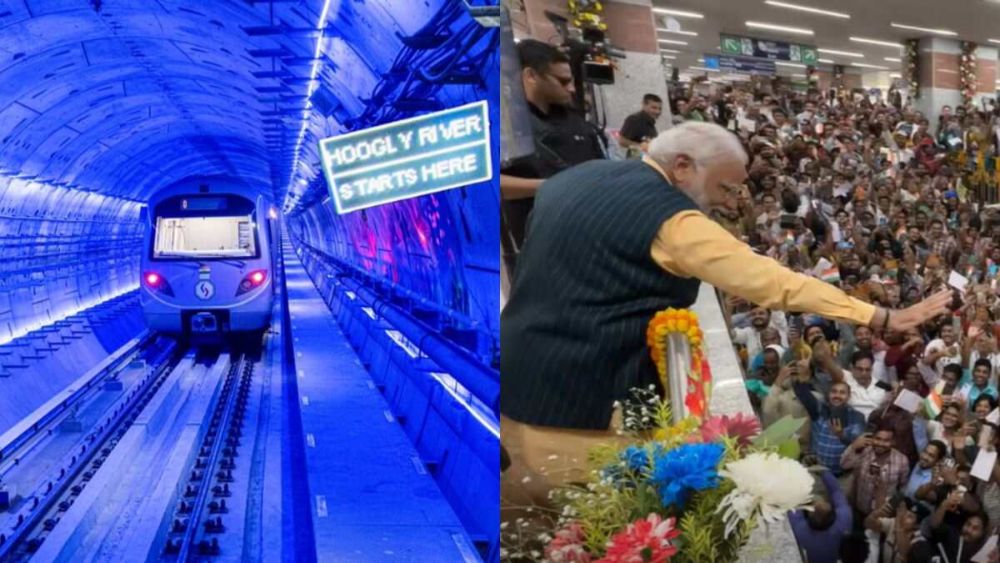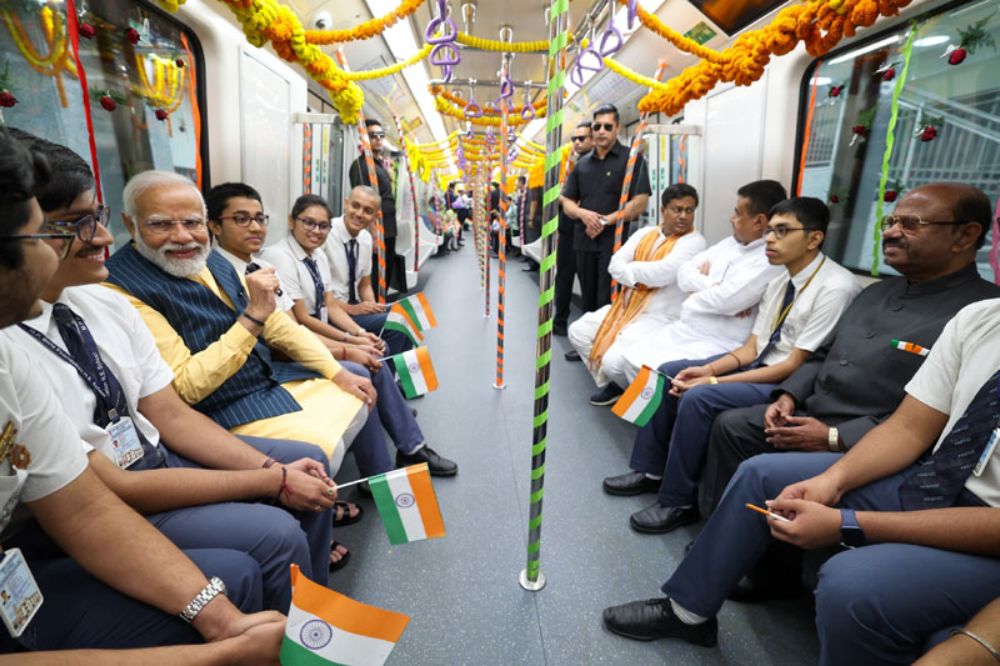Prime Minister Narendra Modi inaugurated India’s first underwater metro rail service on Wednesday, March 6, in Kolkata. The newly inaugurated 4.8-kilometer stretch, known as the Howrah Maidan-Esplanade section, has been constructed at a cost of ₹4,965 crore. This landmark project marks a significant milestone in India’s transportation infrastructure, with the metro train expected to traverse the 520-meter stretch under the River Hooghly in just 45 seconds.

The Metro Railway expressed optimism about the impact of this new corridor, stating, “Once fully commissioned, this corridor will solve the perennial traffic congestion and improve air quality by reducing carbon footprint.”
The Howrah Maidan-Esplanade section, also known as the East-West Metro corridor, marks a significant milestone in India’s transportation history as it features the country’s first transportation tunnel under a major river, the River Hooghly. This tunnel passes beneath the river, connecting the cities of Kolkata and Howrah on the east and west banks, respectively.
Uday Kumar Reddy, General Manager of Kolkata Metro Railway, hailed the project as a marvel of engineering, with trains traversing approximately 16 meters below the level of the river water. The anticipated daily ridership is estimated at 7 lakh passengers. In April 2023, Kolkata Metro achieved a historical feat when its rake ran through a tunnel under the Hooghly River for the first time in India, further solidifying the project’s significance. Additionally, the Howrah metro station stands out as the deepest metro station in India. The 4.8-kilometer stretch between Howrah Maidan and Esplanade is part of the larger East-West Metro corridor, connecting Howrah Maidan to the IT hub Salt Lake Sector V.

Despite its achievements, the project faced challenges and delays since its inception in 2009, particularly during tunneling under the Hooghly River, which commenced in 2017. These challenges included an aquifer burst at Bowbazar in central Kolkata in 2019, resulting in severe ground subsidence and construction disruptions. The historical context of the project dates back to 1921 when the idea of an underwater transportation system in Kolkata was first proposed by the British, inspired by London’s infrastructure. However, due to soil test results and various planning challenges, the project was shelved at that time.
Despite challenges and delays, the inauguration of the underwater metro rail service represents a significant achievement for India’s transportation sector. The project not only enhances connectivity between Kolkata and Howrah but also signifies a major step forward in the country’s infrastructure development efforts.
